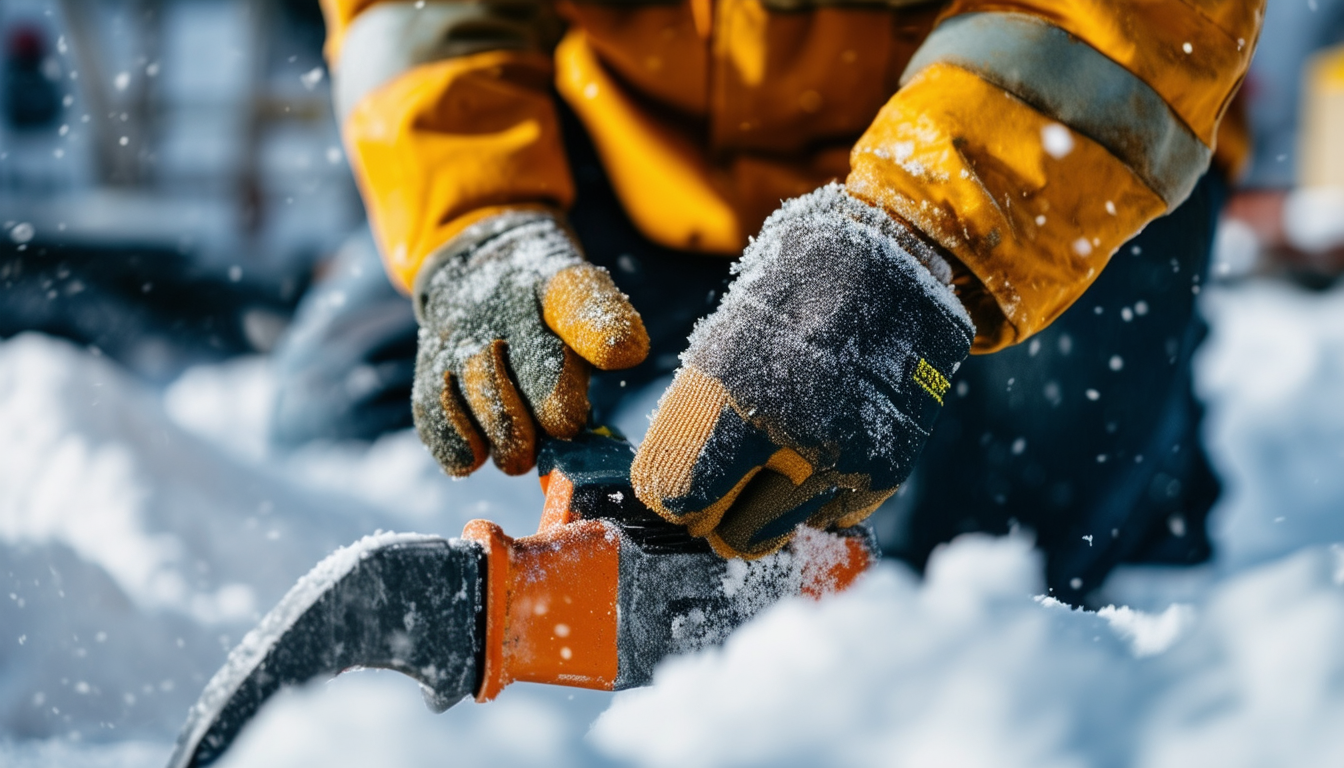
When temperatures drop, finding the right gloves for winter work can make all the difference between a productive day and a miserable one. For more tips on how to stay safe in cold conditions, visit our guide on Working In The Cold.
Why Winter Work Gloves Matter More Than Ever
In the construction and manufacturing sectors, winter can present a unique set of challenges. Cold weather can affect not just comfort but also safety and productivity. Frostbite, numbness, and reduced dexterity are common issues that can lead to serious accidents on the job. For more insights on how to manage these winter risks, explore our Working In The Cold guide.
Winter work gloves are essential for maintaining not only warmth but also the grip and flexibility needed to handle tools and materials efficiently. Investing in high-quality winter gloves is not just about comfort—it's about ensuring that you can perform your job safely and effectively throughout the colder months. Complementing this with cold weather training can further enhance your ability to navigate winter challenges, equipping you with the knowledge to manage risks and maintain productivity in harsh conditions.
Key Features to Look for in Winter Work Gloves
When selecting winter work gloves, several key features should be on your checklist. Firstly, insulation is crucial. Look for gloves with materials like Thinsulate or fleece lining, which provide excellent warmth without adding bulk. For additional guidance on staying warm and safe, check out our Working In The Cold resource.
Water resistance is another important factor. Gloves with a waterproof membrane or coating will keep your hands dry in wet conditions. Additionally, consider gloves with reinforced palms and fingertips for added durability and grip. Finally, flexibility and fit are essential. Gloves should allow for a full range of motion and fit snugly without being too tight.
Top Materials for Warm and Durable Gloves
Choosing the right materials can make a significant difference in how your gloves perform in winter conditions. Leather, particularly goatskin and cowhide, is known for its durability and flexibility. Leather gloves often come with added insulation for warmth.
Synthetic materials like nylon and polyester are also popular due to their water-resistant properties and lightweight nature. These materials are often combined with insulation layers like Thinsulate to provide a balance of warmth and dexterity. For extreme cold, gloves made with a combination of materials, including wool liners and synthetic outer shells, offer optimal performance.
Our Top Picks for 2024: Best Winter Work Gloves
To help you navigate the plethora of options, we've rounded up our top picks for winter work gloves in 2024. First on the list is the Carhartt Men's W.P. Waterproof Insulated Glove, known for its durable construction and excellent insulation.
Next, the Ironclad Cold Condition Gloves offer a perfect blend of warmth and dexterity, making them ideal for detailed tasks. The Vgo High-Dexterity Heavy-Duty Work Gloves are another standout, featuring a thermal liner and waterproof membrane. Lastly, the Wells Lamont HydraHyde Winter Work Gloves provide great value with their water-resistant leather and comfortable fit.
Maintenance Tips: Keeping Your Gloves in Top Shape
Proper maintenance can extend the life of your winter work gloves significantly. Start by cleaning them regularly according to the manufacturer's instructions. Most leather gloves can be wiped down with a damp cloth, while synthetic gloves are often machine washable.
Store your gloves in a dry, ventilated area to prevent mold and mildew. If your gloves get wet, allow them to air dry naturally—avoid direct heat sources like radiators, as they can damage the materials. Periodically treat leather gloves with a conditioner to keep them supple and water-resistant. By following these tips, you can ensure that your gloves remain in top condition throughout the winter season.




.webp?width=352&name=blog%20image%20(1).webp)

Leave a Comment